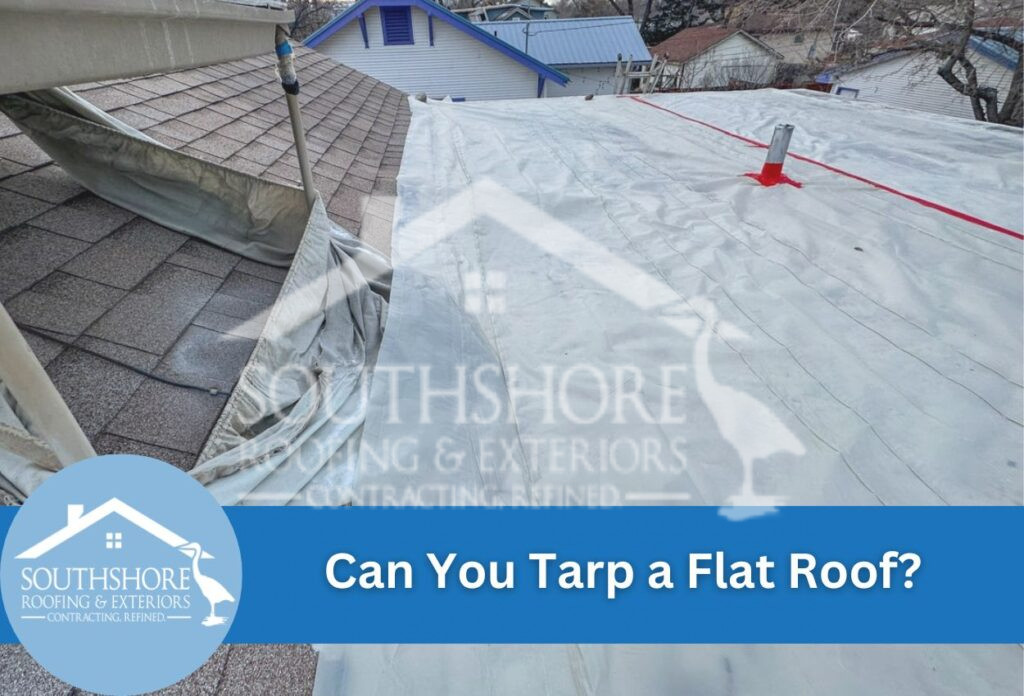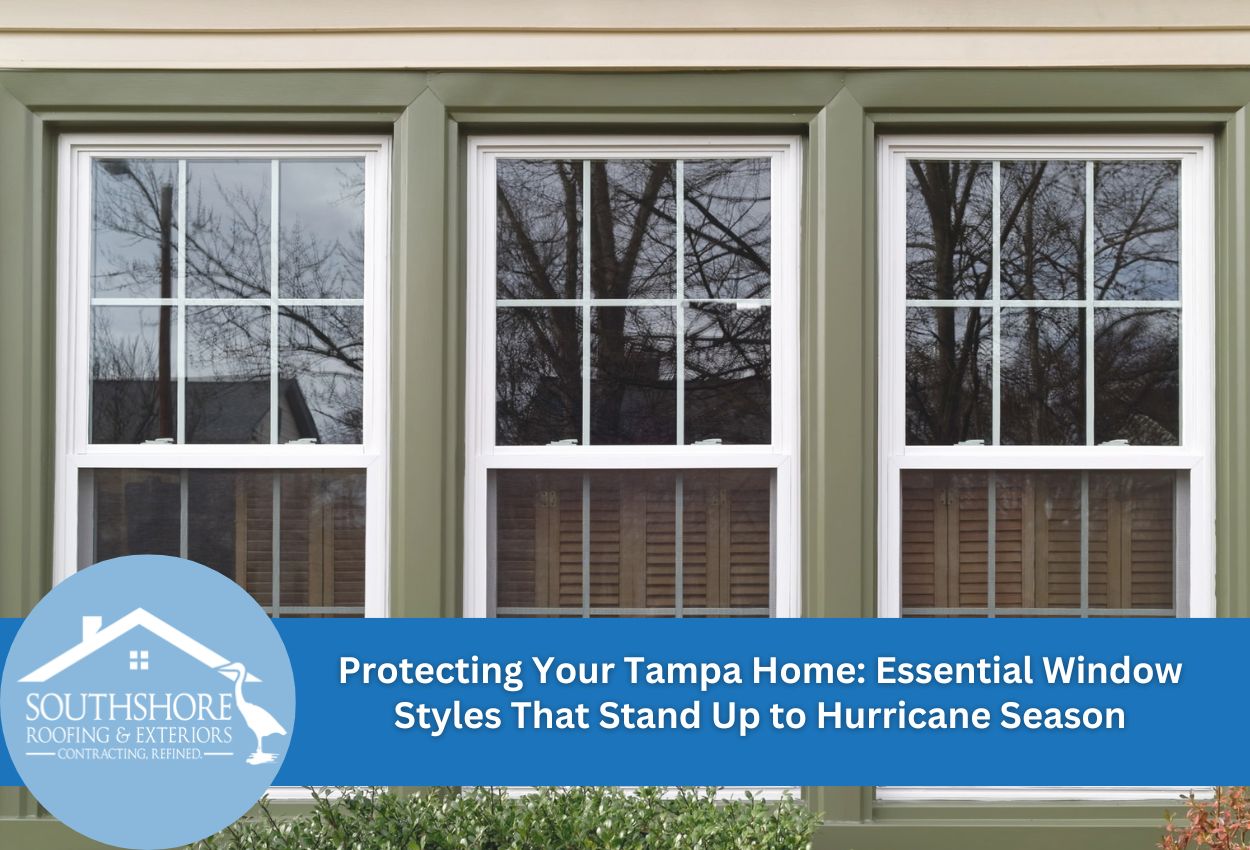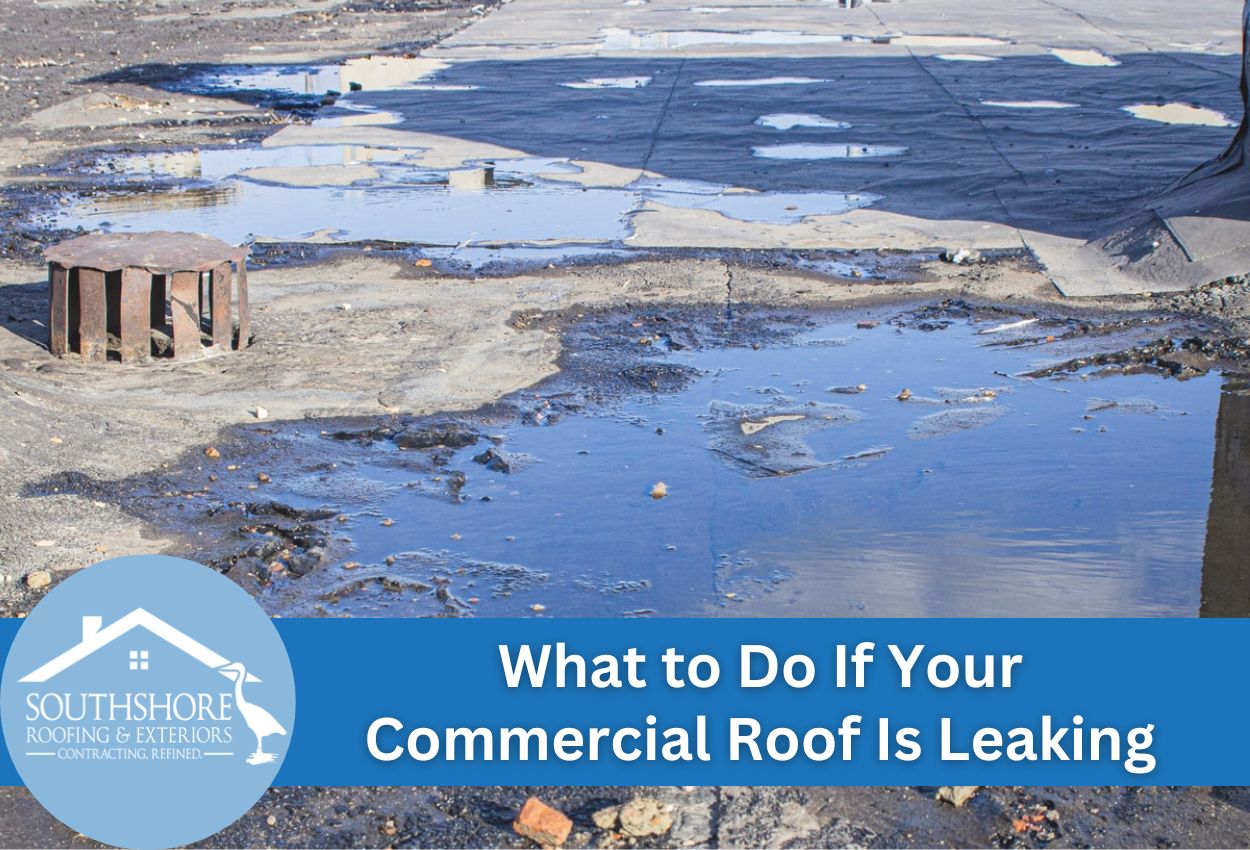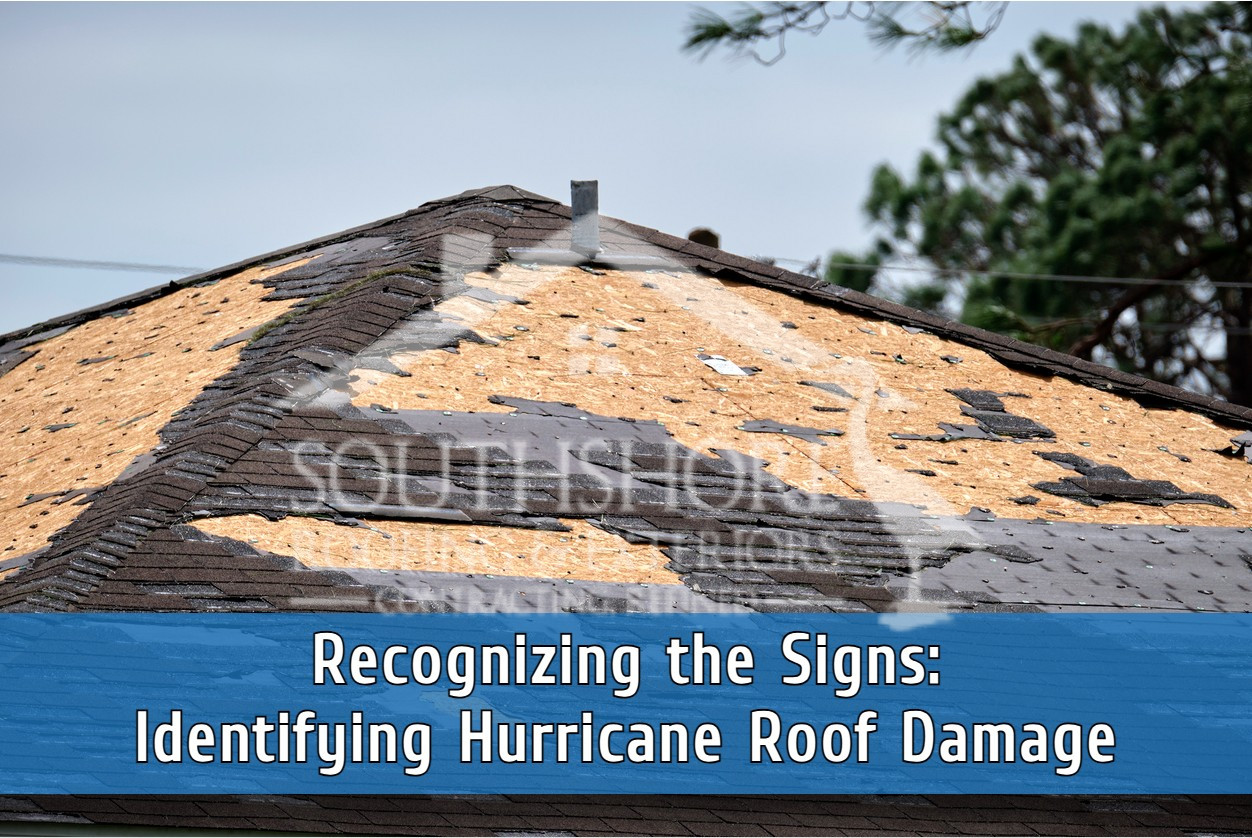Flat roofs are notably common in areas like Tampa, FL, where the mixture of architectural style and climate makes them a practical choice for many buildings. However, the region’s unpredictable weather patterns, especially during storm seasons, pose unique challenges to maintaining these structures. This raises the question: can you tarp a flat roof to protect against weather-induced damage?
This article aims to provide a comprehensive guide on the use of tarps for emergency roof protection, a crucial temporary solution until professional repairs can be made. Understanding when it’s necessary to tarp a flat roof, how this method can prevent further damage from storms, and the differences in tarping a flat versus a pitched roof are essential pieces of knowledge for any property owner in storm-prone areas. We will also discuss professional emergency tarp installation and the steps to seek out flat roof repairs following the storm.
Whether you’re facing an immediate need to safeguard your property following a storm, or planning ahead for the next weather event, knowing how to effectively use a tarp can be a roof-saver. Let’s explore how this simple tool can provide a strong defense against the elements, potentially saving you from significant repair costs and stress.
When to Consider Tarping Your Flat Roof
When a storm hits, the aftermath can leave your flat roof vulnerable to further damage. Can you tarp a flat roof under such circumstances? Absolutely. Tarping becomes necessary when your flat roof has suffered damage that could potentially worsen if left exposed to the elements. This is particularly crucial in areas prone to severe weather conditions, such as Tampa, FL.
To assess whether your flat roof needs tarping, start by inspecting for any visible signs of damage. This includes checking for torn or missing sections of the roofing material, pooling water, or debris that may have punctured the surface. If it’s safe to do so, taking a closer look can help determine the extent of the damage. If you find that your roof has sustained significant harm, it’s wise to consider a professional emergency tarp installation to cover the affected areas until permanent repairs can be made.
Understanding the difference in tarping a flat vs. pitched roof is also important. Flat roofs require careful placement of the tarp to prevent water accumulation, which could lead to further issues. In contrast, pitched roofs might have more straightforward drainage but require secure fastening of the tarp edges to handle wind. No matter the roof type, addressing damage promptly by seeking out flat roof repairs following the storm is crucial to maintaining the integrity of your structure.
Guide to Tarping a Flat Roof
Securing a tarp on a flat roof requires careful attention to detail to ensure the entire area is covered and protected against the elements. Whether you’re dealing with the aftermath of a storm or preparing for impending severe weather in Tampa, FL, it’s critical to understand how to effectively tarp a flat roof. This guide will walk you through the necessary steps to ensure your tarp installation provides maximum coverage and protection.
First, ensure that the tarp is large enough to cover the damaged area plus an additional margin around the edges for secure fastening. Clean the roof surface of any debris or sharp objects that could puncture the tarp. For effective water runoff, slightly elevate the center of the tarp to create a gentle slope towards the roof edges. Secure the tarp edges with heavy-duty nails or specially designed tarp clips, and reinforce these points with sandbags or other weights to prevent the tarp from lifting in strong winds.
Safety should be your top priority during the tarping process. Always work with a partner and use proper safety gear, including non-slip boots, gloves, and eye protection. Avoid tarping during inclement weather conditions to reduce the risk of injury. If the roof damage is extensive, or if you are unsure about safely securing the tarp, it’s advisable to contact professionals for emergency tarp installation.
By following these guidelines, you can effectively tarp your flat roof, minimizing the risk of further damage and ensuring the safety of your property until permanent repairs can be made.
The Benefits of Tarping Post-Storm
Tarping a flat roof after a storm can significantly mitigate further water damage and protect the interior of your home. Especially in areas like Tampa, FL, where storms can be severe, ensuring that any damage to your roof is promptly covered can prevent the situation from worsening. This is particularly crucial for flat roofs, where standing water can lead to leaks and structural damage if not addressed quickly.
Applying a tarp is a cost-effective temporary solution compared to the potentially high costs of water damage repairs. It acts as a barrier against rain, debris, and even sunlight, helping to preserve the underlying roofing material until professional repairs can be conducted. While the cost of a tarp and the initial installation might seem minor, the savings on avoiding increased damage can be substantial.
If considering when it’s necessary to tarp a flat roof, it’s important to act swiftly after a storm to prevent interior damage. Professional emergency tarp installation ensures that the tarp is secured properly, covering all damaged areas effectively. This proactive step not only protects your property but also gives you peace of mind as you seek out flat roof repairs following the storm.
Understanding the strategic benefits of tarping, particularly how it can prevent further damage, is pivotal for any homeowner. Ensuring you have access to professional emergency tarp services can make a significant difference in the aftermath of severe weather.
Professional vs. DIY Tarp Installation
Deciding between professional or DIY tarp installation on a flat roof can be crucial, especially following storm damage. Knowing when it’s necessary to tarp a flat roof and understanding the advantages of professional services can help in making an informed decision for your Tampa, FL property.
Professional emergency tarp installation offers expert assurance that the tarp will be secured properly, minimizing the risk of further damage like water leaks or structural vulnerabilities. Professionals have the tools and experience to handle the nuances of flat roofs, ensuring the tarp is not only placed but also maintained properly.
For homeowners considering DIY tarp installation, it’s important to understand the required materials and tools. You will need a sufficiently large tarp, nails or tarp clips, a sturdy ladder, and protective gear. It’s essential to ensure the tarp covers the entire damaged area and extends beyond it to prevent water from seeping through the edges. DIY can be cost-effective and immediate, but only if done correctly.
While DIY tarp installation might seem feasible, the risks associated with improper installation can lead to more severe issues. In cases of significant damage, or if you are not confident in your ability to securely install the tarp, seeking professional help is recommended.
Repair and Maintenance After Tarping
After emergency tarping a flat roof, it’s critical to seek professional roof repair services. Temporary tarping is an effective short-term solution for protecting your property from further weather-related damage, but it is not a permanent fix. Professional roofers can assess the extent of the damage and perform the necessary repairs to restore the integrity of your roof.
Maintenance of the tarp is essential to ensure its effectiveness until repairs can be made. Regularly inspect the tarp for any signs of wear or damage, such as tears or loosening. If the tarp is damaged, it may need to be replaced or resecured to continue providing adequate protection. Additionally, ensure the tarp is properly anchored and that water is not pooling on its surface, as this could lead to further roofing issues.
Transitioning from a tarp to permanent roof repairs involves coordinating with roofing professionals who can provide a detailed assessment and appropriate solutions for your flat roof. This might include repairing the underlying roofing materials or possibly replacing sections of the roof if the damage is extensive. The timing of these repairs is crucial, especially in areas prone to frequent storms, to prevent the exacerbation of existing damage.
Ultimately, while tarping can provide immediate protection, the goal should always be to restore the roof to its optimal condition through professional repairs. This ensures the safety, functionality, and longevity of your roofing system.
Comparing Flat Roof Tarping with Pitched Roof Tarping
Tarping techniques for flat and pitched roofs differ significantly due to their structural distinctions. Flat roofs, commonly found in areas like Tampa, FL, present unique challenges, particularly when it comes to emergency tarping after storms. Unlike pitched roofs, flat roofs do not naturally guide water toward the edges, which can lead to water pooling if the tarp is not properly installed.
One key difference in the tarping process of flat roofs compared to pitched roofs is the necessity for creating a slight incline to facilitate water runoff. This is often achieved by strategically placing supports under the tarp, which helps prevent water accumulation. In contrast, pitched roofs typically require less manipulation as their slope naturally aids in water drainage. Flat roofs also demand thorough securing of the tarp’s edges to avoid wind lift, which can be more challenging due to the roof’s design.
While both roof types require prompt and secure tarping following damage, the techniques and challenges differ. Understanding these differences is essential for effective storm damage mitigation and long-term roof maintenance.
Protect Your Roof with SouthShore Roofing & Exteriors’s Emergency Tarping Services
When facing the urgency of protecting your flat roof post-storm, SouthShore Roofing & Exteriors is here to provide immediate assistance. Call us at (813) 400-3329 for professional emergency tarp installation, ensuring your property stays safeguarded from further damage.






